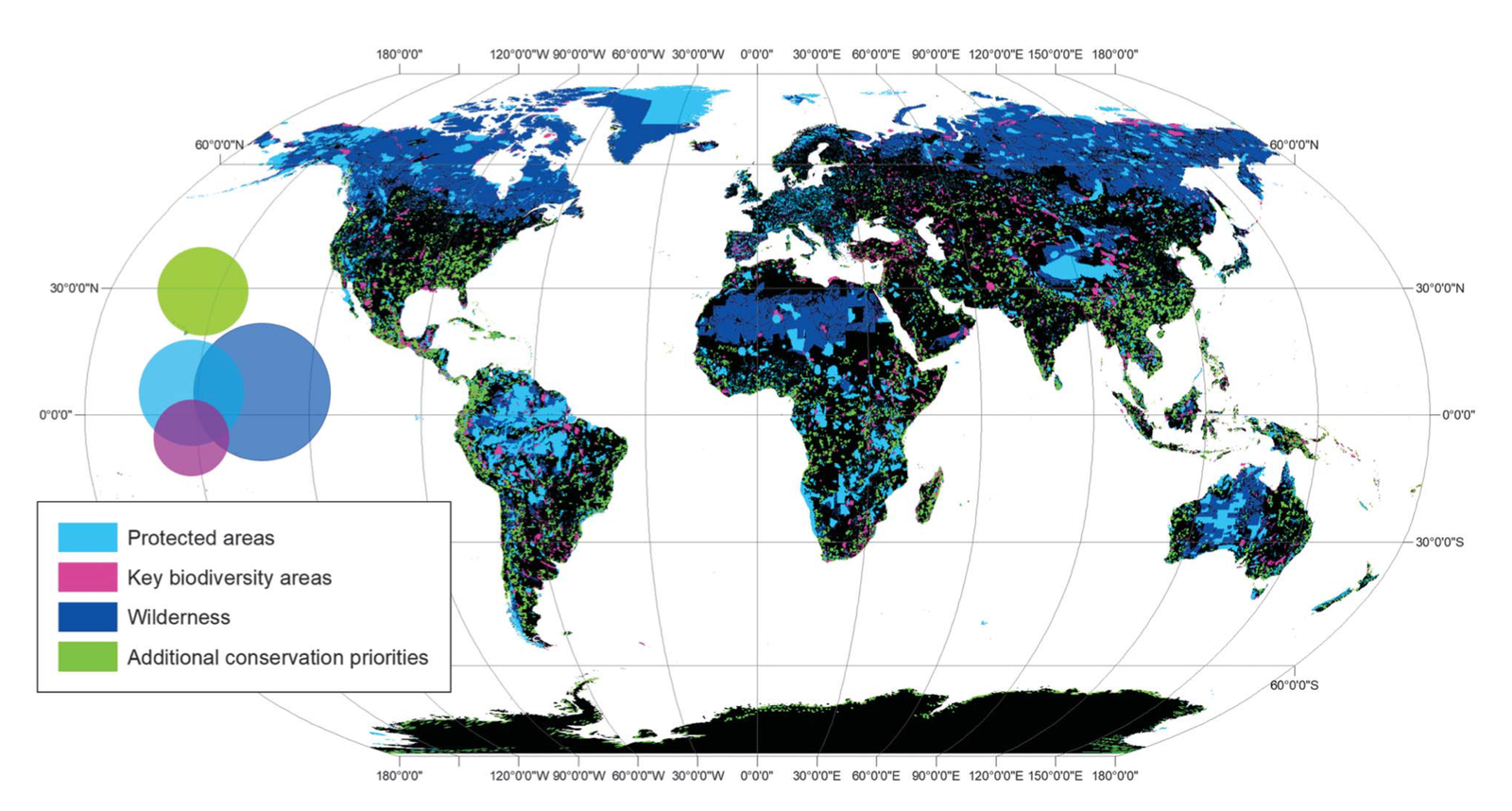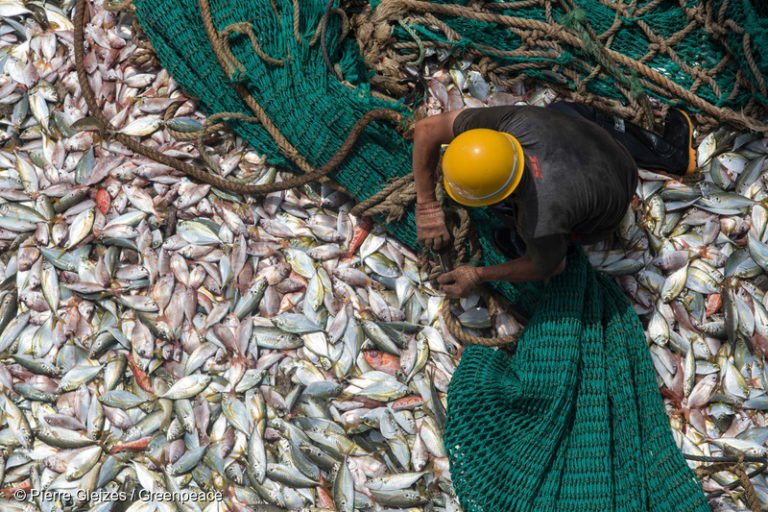- A new study says 44% of Earth’s terrestrial area needs conservation attention to halt the runaway destruction of the natural world.
- The figure is significantly higher than the goal currently under discussion as part of the global post-2020 agenda, which is to protect 30% of land and ocean by 2030.
- The area identified for protection by the new study is home to 1.8 billion people, almost a quarter of the human population.
- The study authors suggest prioritizing biologically rich regions at the highest risk of being converted for human use by 2030, most notably in Africa.
How much of Earth’s terrestrial area needs protection to secure the planet’s biodiversity? A new estimate says 44%, or 64 million square kilometers (25 million square miles), an area that is home to almost a quarter of humanity.
“Our study is the current best estimate of how much land we must conserve to stop the biodiversity crisis,” James R. Allan, lead author of the study published in the journal Science, said in a statement. “It is essentially a conservation plan for the planet, and we must implement it quickly.”
Countries missed the deadline of safeguarding 17% of terrestrial landscapes by 2020 set under the U.N. Convention on Biological Diversity (CBD). They newly proposed target is also significantly higher than the goal currently under discussion for the CBD’s post-2020 agenda: protecting 30% of land and ocean by 2030.
Scientists say ambitious goals are required to halt the tremendous human-induced biodiversity loss occurring worldwide and to escape the worst effects of climate change. There is an urgent need to expand protections, but to what extent, where and in what form are still being thrashed out.
Several multidisciplinary teams are working to come up with numbers that are scientifically defensible and can pass muster during negotiations at a much-delayed CBD summit scheduled for later this year in China.
Currently, targets proposed by various groups vary widely, from 26% to 60%. There doesn’t appear to be a scientific consensus, and reaching one via diplomatic efforts isn’t expected to be easy. A major challenge is ensuring tangible benefits for wildlife without imposing intolerable costs on human beings anywhere.
“The paper does a great job of pointing directly at the conundrum of scaling up conservation effort in places where there are large numbers of people, and many of them highly dependent on nature,” David Obura, director of Coastal Oceans Research and Development–Indian Ocean (CORDIO) East Africa, said in an email to Mongabay. “It calls for new approaches to conservation that are people-focused and ethical.”
The building blocks of the safety net proposed by Allan et al. are existing protected areas (PAs), key biodiversity areas (KBAs) and ecologically intact areas. They also mapped the distribution of nearly 35,600 species — including mammals, birds, amphibians and reptiles — to pinpoint areas most in need of conservation. The formulation doesn’t account for plant diversity. Including that information would translate into an even higher target, previous research shows.
But these lands aren’t just wildlife habitats. The area identified for conservation action by the Science study is home to 1.8 billion people. The authors say they’re mindful that large-scale interventions could transmute into land grabs in some areas, leaving vulnerable communities even worse off. They cite “human rights abuses, displacement, militarized forms of violence, and conflict with local worldviews” that can occur under the garb of environmental protection.
They don’t suggest bundling all 64 million km2 into protected areas as defined by the IUCN, the global conservation authority. The researchers instead suggest focusing “conservation attention” on these landscapes, ranging from the designation of PAs to implementing sustainable land-use policies.
“Conservation actions need to promote the autonomy and self-determination of people who call the land their home,” said Allan, a biodiversity specialist at the University of Amsterdam. “We have many effective levers ranging from empowering Indigenous Peoples, to policies that limit deforestation, to protected areas, depending on the local context.”
Since such a massive expansion is unlikely to happen quickly, the study authors also recommend prioritizing biologically rich regions at the highest risk of being converted for human use by 2030. In the worst-case scenario, about 1.3 million km2 (500,000 mi2) of intact land, an area larger than South Africa, could be converted by 2030, their modeling shows.

A large proportion of wildlife habitats at risk of conversion lies in Africa (more than 800,500 km2, or 309,000 mi2). The researchers point out that much of this destruction in less-industrialized nations is driven by overconsumption in wealthier countries. “Those countries have a moral obligation to reduce these demands,” the paper’s authors write. However, their prescriptions for doing so are broad, like shifting away from an “unsustainable model based on promoting environmentally destructive industries” and financing local conservation efforts.
“As a science paper [it] stops short of making it clear that successful conservation action has to be fully integrated in a full paradigm shift of the global community away from consumption/profit-maximization, and reducing the drivers of decline,” Obura said. “It doesn’t matter what we do with biodiversity actions if we don’t reduce the drivers of decline.”
The new targets under the CBD will determine the direction of the conservation movement and also become the yardstick by which progress is measured in individual countries. The targets will likely differ by country. This is because the proportion of a country’s landmass deemed worthy of and feasible for conservation activities varies.
Tropical countries are generally more biodiverse and report high rates of endemism. At the same time, countries like the U.S., Canada, Russia, Australia and Brazil, which host vast intact landscapes, will have to continue to secure large swaths of their national territories.
What complicates the equation is that in many nations, lands that bring immediate benefits for people through agriculture must be set aside, which means local communities will end up paying a high price for conservation. “We must recognize that in an equity-based approach, such trade-offs will often entail compromise on the conservation side,” the study authors said.
It remains to be seen if CBD member countries can hash out an agreement that translates the shared responsibility of preserving the natural world into differentiated but concrete conservation goals.
Citation:
Allan, J. R., Possingham, H. P., Atkinson, S. C., Waldron, A., Di Marco, M., Butchart, S. H., … Watson, J. E. (2022). The minimum land area requiring conservation attention to safeguard biodiversity. Science, 376(6597), 1094-1101. doi:10.1126/science.abl9127
Banner Image: African buffalo in Kenya. Image by Rhett A. Butler/Mongabay.











